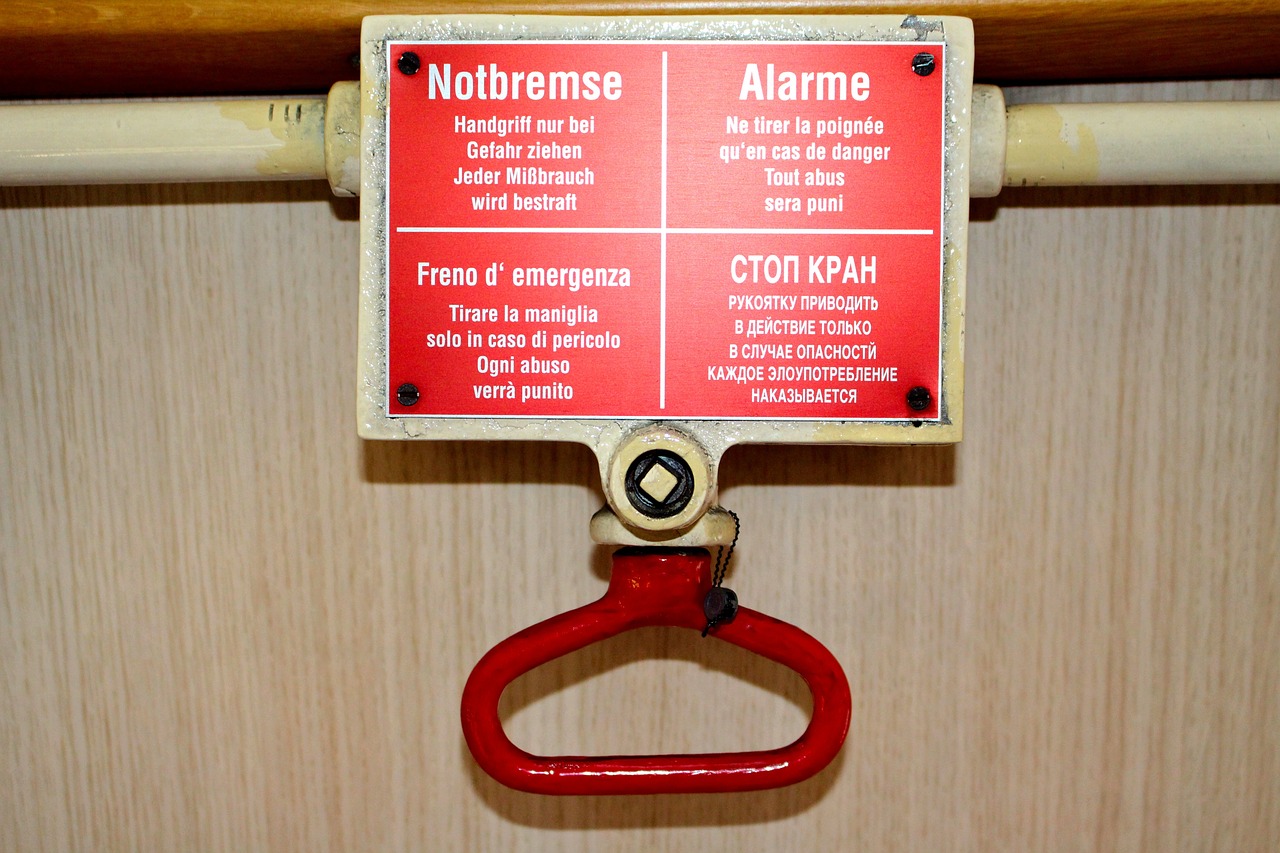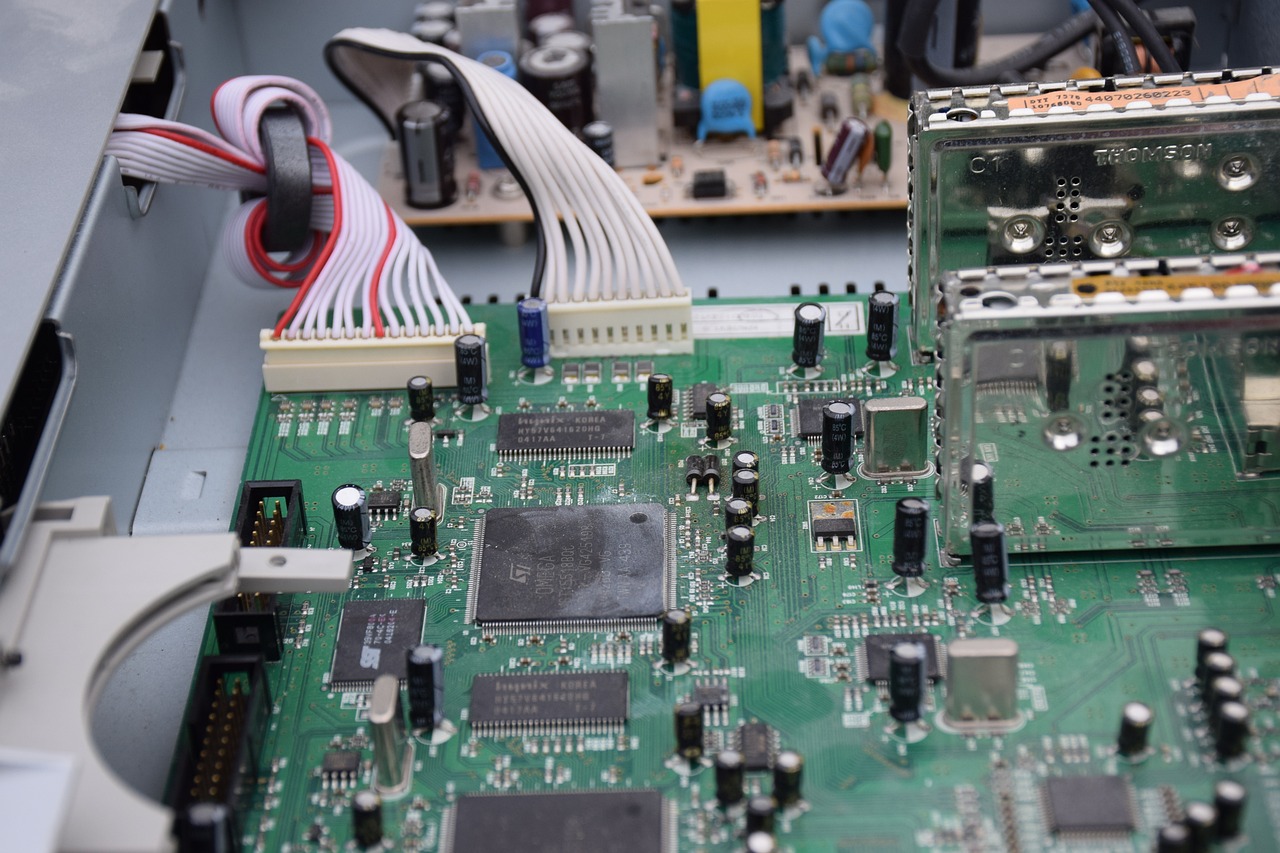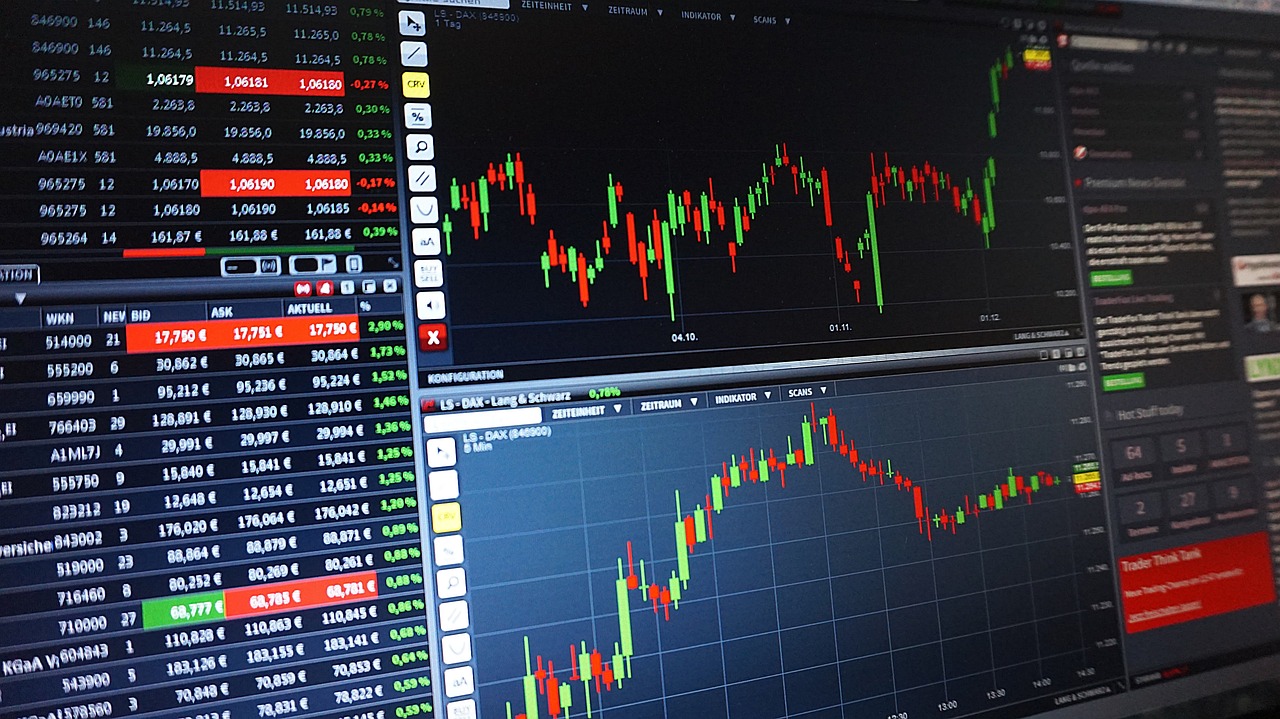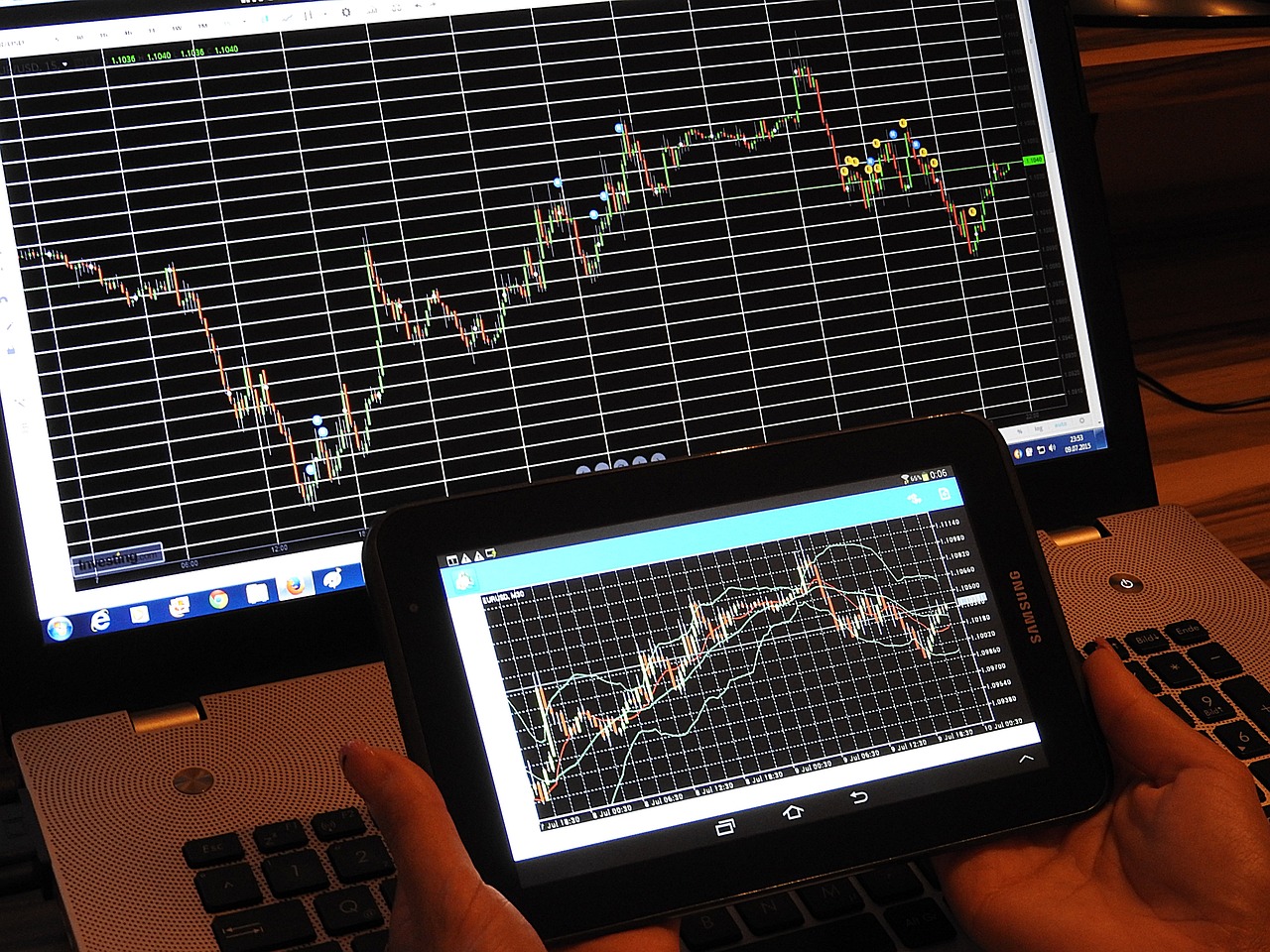How to Identify False Signals in Technical Analysis
In the world of trading, the ability to identify false signals in technical analysis can be the difference between making a profitable trade and suffering significant losses. Technical analysis is like a treasure map; it guides traders through the complex landscape of market movements, helping them make informed decisions based on historical price data and various indicators. However, just like any map, it can be misleading. False signals, those deceptive hints suggesting a market direction that doesn't materialize, can lead traders astray. So, how do we navigate this tricky terrain and spot these false signals before they lead us off course?
First, let's dive into the essence of technical analysis. At its core, it relies on the idea that all market information is reflected in price movements. Traders analyze charts, patterns, and indicators to predict future price movements. But here's the catch: the market is influenced by countless factors, including news events, economic reports, and trader psychology, which can create noise in the data. This noise can trigger what we call false signals, which can mislead even the most experienced traders.
Understanding the common types of false signals is crucial. For instance, whipsaws can shake traders out of their positions, making them feel like they’re on a roller coaster ride. A whipsaw occurs when the price moves sharply in one direction, only to reverse quickly, trapping traders who acted on the initial movement. Similarly, false breakouts can lure traders into thinking a price level has been breached, only to see it revert back, causing confusion and frustration.
So, how do we equip ourselves to avoid these pitfalls? Recognizing patterns and employing effective risk management strategies can be game-changers. By honing our skills in identifying potential whipsaw patterns and understanding the characteristics of false breakouts, we can significantly reduce the likelihood of getting caught in these traps. Risk management becomes our safety net, allowing us to minimize losses and protect our capital when the market doesn’t behave as expected.
As we explore the world of technical indicators, we must remember that they are not foolproof. Popular indicators like moving averages and the Relative Strength Index (RSI) can sometimes lead to misleading signals, especially in volatile markets. For example, moving averages may lag behind actual price movements, making them less effective during sudden market shifts. Similarly, misinterpreting the RSI can lead traders to believe a market is overbought or oversold when it’s merely experiencing normal fluctuations.
To enhance the accuracy of our signals, we can employ various strategies. One effective method is to combine multiple indicators, creating a more robust framework for making trading decisions. This approach allows us to confirm signals and filter out noise, reducing the chances of falling for false signals. Additionally, integrating price action analysis provides valuable context to technical signals, helping us to better understand market dynamics and improve our overall trading strategy.
In conclusion, identifying false signals in technical analysis is a skill that requires practice, patience, and a keen eye for detail. By understanding the common pitfalls, recognizing patterns, and employing effective risk management strategies, traders can navigate the complexities of the market with greater confidence. Remember, the market is full of surprises, but with the right tools and knowledge, we can turn those surprises into opportunities.
- What is a false signal in technical analysis? A false signal occurs when a technical indicator or chart pattern suggests a market movement that does not materialize, leading traders to make poor decisions.
- How can I avoid false signals? By understanding common types of false signals, recognizing patterns, and employing effective risk management strategies, traders can minimize the impact of false signals.
- Are all technical indicators reliable? No, while technical indicators can provide valuable insights, they also have limitations and can sometimes generate misleading signals.
- What is the best way to confirm a trading signal? Combining multiple indicators and using price action analysis can help confirm signals and reduce the likelihood of false signals.

Understanding Technical Analysis
Technical analysis is like a crystal ball for traders, allowing them to peek into the future of financial markets. It’s a method that relies on historical price data and trading volume to forecast future price movements. Instead of getting lost in the complexities of fundamental analysis—like company earnings or economic indicators—technical analysis simplifies things by focusing purely on the price action of a security. Traders believe that all necessary information is already reflected in the price, which is why they rely on charts and various indicators to guide their decisions.
At its core, technical analysis operates on a few key principles. First, it assumes that prices move in trends. This means that once a trend is established, it’s likely to continue for a certain period. Think of it like a train on a track; once it's moving, it's hard to stop. Traders use this principle to identify entry and exit points, aiming to ride the wave of price movements. Additionally, technical analysts believe that history tends to repeat itself. Patterns that have occurred in the past are likely to occur again, providing traders with a roadmap to navigate future price movements.
One of the most appealing aspects of technical analysis is its versatility. Whether you're day trading, swing trading, or investing for the long haul, technical analysis can be adapted to suit your needs. By using various tools and techniques, traders can analyze different time frames, from minutes to months. This flexibility makes it a popular choice among traders of all experience levels.
Moreover, technical analysis is heavily reliant on charts, which visually represent price movements over time. These charts can be line charts, bar charts, or candlestick charts, each offering unique insights. For instance, candlestick charts provide more information than line charts by showing the open, high, low, and close prices for each time period. This additional data can help traders make more informed decisions.
While technical analysis offers many benefits, it’s not without its challenges. Traders must be cautious of false signals, which can lead to poor trading decisions. Understanding how to interpret these signals is crucial. For example, a sudden spike in price might seem like a clear buying opportunity, but it could also be a false breakout—a temporary price movement that doesn’t indicate a sustainable trend. This is where the importance of combining various indicators comes into play, as it can help confirm or refute potential trading signals.
In summary, technical analysis is a powerful tool in the arsenal of traders. It allows for a systematic approach to trading by focusing on price movements and trends. However, it requires a keen eye for detail and an understanding of market psychology to navigate successfully. As you delve deeper into the world of technical analysis, remember that the journey is as important as the destination. Each chart tells a story, and it’s up to you to interpret it wisely.

Common Types of False Signals
When diving into the world of technical analysis, traders often encounter a myriad of signals that can either lead to lucrative trades or disastrous losses. Unfortunately, not all signals are created equal. In fact, some can be downright misleading, leading traders to make hasty decisions based on false premises. Understanding the common types of false signals is crucial for anyone looking to navigate the complexities of the financial markets successfully.
One of the most prevalent types of false signals is the whipsaw. A whipsaw occurs when the market moves in one direction, prompting traders to take action, only to reverse shortly after, resulting in losses. This phenomenon can be particularly frustrating, as it often seems like the market is playing tricks on traders. Imagine trying to catch a slippery fish—just when you think you have it, it wriggles away! Whipsaws can be especially common in volatile markets, where price movements are erratic, making it essential for traders to stay alert and develop strategies to avoid falling victim to these deceptive signals.
Another common false signal is the false breakout. This occurs when the price breaks through a significant level of support or resistance, leading traders to believe a new trend is forming. However, the price quickly retreats back within the previous range, leaving those who acted on the breakout in a precarious position. To differentiate between a genuine breakout and a false one, traders should look for confirmation through additional indicators or volume spikes. It’s like spotting a mirage in the desert; it looks enticing, but if you rush toward it without confirmation, you may just end up disappointed and dehydrated.
Additionally, some misleading indicators can create confusion for traders. For example, indicators like the Moving Average Convergence Divergence (MACD) or the Relative Strength Index (RSI) can sometimes provide signals that lead traders astray. These indicators are designed to simplify decision-making, but they can also lag behind price movements, resulting in missed opportunities or, worse, false alarms. It’s essential to understand the limitations of these tools to avoid relying solely on them for trading decisions.
To summarize, recognizing and understanding the common types of false signals is vital for any trader. By being aware of whipsaws, false breakouts, and misleading indicators, traders can develop strategies to navigate these pitfalls. It’s not just about spotting the signals; it’s about understanding the context in which they appear. After all, in the world of trading, knowledge is the best armor against the unexpected twists and turns of the market.

Whipsaws Explained
Whipsaws can be a trader's worst nightmare, and understanding them is crucial for anyone venturing into the world of technical analysis. Essentially, a whipsaw occurs when the market moves sharply in one direction, only to quickly reverse and head in the opposite direction. This can lead to significant losses, especially if traders act on the initial movement without waiting for confirmation. Imagine you're in a boat, and the waves suddenly toss you from side to side; that's what a whipsaw feels like in trading. You think you’ve found a clear direction, only to be thrown back into confusion.
Whipsaws often happen during periods of high volatility or when market participants are reacting to news events. For instance, if a major economic report is released, traders might rush to buy or sell based on their initial interpretations. This can create a spike in price, leading many to believe a new trend has begun. However, as the dust settles and market sentiment shifts, the price may reverse, trapping those who acted too quickly. To avoid getting caught in a whipsaw, traders need to develop a keen sense of market conditions and be patient.
One effective strategy to dodge whipsaws is to use a combination of technical indicators to confirm a trend before making a trade. For example, you might look for a price breakout accompanied by increased volume. If the volume is low, it’s a red flag that the breakout may not be genuine. Here’s a simple table that outlines some common indicators and their roles in identifying potential whipsaws:
| Indicator | Purpose | Whipsaw Detection |
|---|---|---|
| Volume | Measures the number of shares traded | High volume confirms breakouts; low volume suggests caution |
| Moving Averages | Shows average price over a specific period | Crossover patterns can indicate potential reversals |
| MACD (Moving Average Convergence Divergence) | Indicates momentum and trend direction | Divergence from price can signal a potential whipsaw |
In addition to using indicators, recognizing patterns on the charts can also help traders identify potential whipsaws. For example, if you observe a price movement that quickly retraces back to its original level, it can be a sign of a whipsaw. By keeping an eye on candlestick patterns, such as pin bars or engulfing candles, you can gain insights into market sentiment. These patterns often serve as warning signs that the market may be about to reverse.
Lastly, effective risk management strategies are essential when navigating through whipsaws. Setting stop-loss orders can help mitigate losses when the market moves against you unexpectedly. Additionally, traders should consider position sizing and only risk a small percentage of their capital on each trade. This way, even if you do get caught in a whipsaw, the impact on your overall portfolio will be minimized.

Recognizing Patterns
Recognizing patterns in technical analysis is akin to deciphering a secret code that can unlock the mysteries of market movements. Just like a detective sifting through clues, traders must learn to identify specific formations that indicate potential whipsaws. These patterns can provide invaluable insights, helping you distinguish between genuine signals and those pesky false alarms that can lead to costly mistakes.
One of the most common patterns to watch for is the head and shoulders formation. This pattern typically signals a reversal in trend and can be a red flag for traders. When you spot a head and shoulders pattern forming, it's crucial to analyze the volume accompanying it. A significant volume increase during the formation of the right shoulder can indicate a strong likelihood of a reversal. Conversely, if the volume is low, it might suggest that the pattern is not as reliable.
Another pattern to be aware of is the double top and double bottom. These formations are essential indicators of potential market reversals. A double top occurs when the price reaches a peak twice but fails to break through, signaling a potential drop. On the other hand, a double bottom indicates that the price has hit a low point twice and may be poised for a bounce back. Recognizing these patterns can help you make informed decisions, but remember, they should be confirmed with other indicators for greater accuracy.
Furthermore, trendlines can also play a significant role in recognizing patterns. Drawing trendlines on your charts can help you visualize the overall direction of the market. If the price breaks through a well-established trendline, it often signals a potential whipsaw. By being vigilant and watching for these breakouts, you can avoid getting trapped in false signals.
In addition to these patterns, traders should also pay close attention to candlestick formations. Certain candlestick patterns, such as the doji or the engulfing pattern, can provide clues about market sentiment. A doji, for instance, indicates indecision in the market, while an engulfing pattern can signal a strong reversal. By combining candlestick analysis with other technical indicators, you can enhance your ability to recognize patterns and make better trading decisions.
Ultimately, recognizing patterns requires a keen eye and practice. The more you familiarize yourself with these formations, the more adept you'll become at spotting them in real-time market scenarios. It's essential to remain patient and avoid jumping to conclusions based solely on one pattern. Instead, look for confirmation from other indicators and patterns to ensure that you're not falling prey to false signals.

Risk Management Strategies
When trading in the financial markets, one of the most crucial aspects to consider is risk management. It's not just about making profits; it's also about protecting what you have. Imagine driving a car without a seatbelt; it might feel exhilarating, but the risk of an accident could have serious consequences. Similarly, in trading, failing to implement effective risk management strategies can lead to significant losses, especially when navigating through the treacherous waters of false signals.
One of the first steps in risk management is to establish a clear risk-reward ratio. This means determining how much you are willing to risk on a trade compared to how much you hope to gain. A common approach is to aim for a risk-reward ratio of 1:2 or better, meaning for every dollar you risk, you aim to make at least two dollars. This simple calculation can help you decide whether a trade is worth taking, especially when false signals are lurking around every corner.
Another effective strategy is to use stop-loss orders. These are pre-set orders that automatically sell your position when it reaches a certain price, helping to limit your losses. Think of it as a safety net that catches you before you fall too deep into the pit of despair that comes with poor trading decisions. By setting stop-loss levels based on technical analysis—like recent support or resistance levels—you can protect your capital from unexpected market movements.
It's also essential to diversify your trading portfolio. Just like you wouldn't put all your eggs in one basket, you shouldn't concentrate all your investments in a single asset or market. By spreading your risk across different assets, you can mitigate the impact of a false signal in one area. For instance, if one stock is showing a false breakout, other investments may still perform well, cushioning your overall portfolio against losses.
Additionally, keeping a trading journal can significantly enhance your risk management strategy. Documenting your trades, including your thoughts and the reasoning behind each decision, can help you identify patterns over time. You'll start to notice which strategies work and which ones lead to false signals. This reflection can be invaluable, as it allows you to learn from your mistakes and improve your decision-making process.
Lastly, it's crucial to stay updated with market news and events that could impact your trades. Sometimes, false signals can be exacerbated by sudden news or economic reports. By staying informed, you can better anticipate market movements and adjust your strategies accordingly. Remember, in the world of trading, knowledge is power, and being proactive can save you from the pitfalls of false signals.
In conclusion, effective risk management strategies are essential for any trader looking to navigate the complexities of technical analysis. By establishing a clear risk-reward ratio, utilizing stop-loss orders, diversifying your portfolio, maintaining a trading journal, and staying informed, you can significantly reduce the chances of falling victim to false signals. Always remember, it's not just about winning; it's about protecting your hard-earned capital.
- What is the most important aspect of risk management in trading? The most important aspect is determining a clear risk-reward ratio for each trade, which helps you assess whether the potential reward justifies the risk.
- How can stop-loss orders help in managing risk? Stop-loss orders automatically close a losing position at a predetermined price, limiting potential losses and protecting your capital.
- Why is diversification important in trading? Diversification spreads risk across multiple assets, reducing the impact of a false signal in any single investment.
- How can a trading journal improve my trading performance? A trading journal allows you to track your trades, reflect on your decision-making process, and identify patterns that can help you improve over time.
- How does market news affect trading signals? Market news can lead to sudden price movements that may create false signals. Staying informed helps you anticipate these changes and adjust your strategy accordingly.

False Breakouts
False breakouts can be a trader's worst nightmare. Imagine you’re all set for a big win, and just as you enter a trade based on a breakout, the market reverses and leaves you in the dust. It’s frustrating, right? A false breakout occurs when the price of an asset breaks through a significant support or resistance level but fails to maintain that movement, quickly reversing direction instead. This can lead to significant losses if you're not careful.
To understand false breakouts better, let’s dive into their characteristics. Typically, a breakout is considered valid when the price closes above resistance or below support with strong volume backing it. However, in the case of a false breakout, the price might initially surge past these levels, creating a sense of excitement, only to retreat shortly after. This can happen for various reasons, such as market manipulation or sudden shifts in sentiment. The key is to recognize these signals early to avoid getting caught up in the hype.
So how can you differentiate between a genuine breakout and a false one? Here are some tips:
- Volume Analysis: Always check the trading volume during a breakout. A significant increase in volume supports the validity of the breakout. If the volume is low, it might be a red flag.
- Time Frames: Look at multiple time frames. A breakout that happens on a daily chart but fails to hold on an hourly chart may indicate weakness.
- Market Conditions: Be aware of broader market trends. A breakout occurring during a strong uptrend or downtrend is more likely to be valid compared to one that happens in a sideways market.
Additionally, employing certain strategies can help you avoid falling victim to false breakouts. One effective method is to wait for a confirmation candle after the breakout. This means waiting for the next candle to close above or below the breakout level before making your move. This simple step can save you from entering a trade too early.
Moreover, using stop-loss orders can be a lifesaver. Placing a stop-loss just below the breakout point can help limit your losses in case the market decides to reverse unexpectedly. It’s like having a safety net to catch you when you stumble.
In conclusion, while false breakouts are a common pitfall in technical analysis, understanding their nature and implementing effective strategies can significantly reduce the risk of being caught off guard. Always stay vigilant, and remember that in trading, patience and caution can be your best allies.

Indicators and Their Limitations
When it comes to technical analysis, indicators play a crucial role in guiding traders through the tumultuous waters of the financial markets. These tools are designed to provide insights into price movements, trends, and potential reversals. However, it's important to understand that no indicator is foolproof. Each comes with its own set of limitations that can lead to false signals. So, how do we navigate this tricky landscape?
One of the most common pitfalls traders face is over-reliance on a single indicator. For instance, the Moving Average is a popular tool that smooths out price data to identify trends over a specific period. While it can be incredibly useful, it often lags behind actual price movements, especially in volatile markets. This lag can result in missed opportunities or, worse, entering trades based on outdated information. Think of it like trying to catch a train that has already left the station; by the time you see it, it’s too late!
Another widely used indicator is the Relative Strength Index (RSI). This momentum oscillator measures the speed and change of price movements, helping traders identify overbought or oversold conditions. However, the RSI can produce misleading signals, especially during strong trends. For example, an asset can remain overbought for an extended period, leading traders to believe a reversal is imminent when, in fact, the trend is still strong. It's like standing on the edge of a cliff, thinking you can fly just because your friends are jumping off; the reality is, you might just end up in free fall!
To illustrate the limitations of these indicators, let’s take a look at a comparison table:
| Indicator | Purpose | Limitations |
|---|---|---|
| Moving Average | Identifies trends | Lags behind price movements; can give late signals |
| Relative Strength Index (RSI) | Measures momentum | Can remain overbought/oversold in strong trends |
It's essential for traders to recognize these limitations and not let them dictate their trading decisions blindly. Instead, a more holistic approach is advisable. Combining multiple indicators can provide a more rounded view of the market. For instance, using both the Moving Average and RSI together can help confirm trends and reduce the likelihood of acting on false signals. This combination acts like a safety net, catching you before you fall into the trap of a misleading signal.
Moreover, integrating price action analysis can further enhance the accuracy of trading decisions. By focusing on the actual price movements rather than solely relying on indicators, traders can gain a deeper understanding of market sentiment. This approach allows you to read between the lines of the charts, giving you an edge in identifying whether a signal is genuine or just another false alarm.
In summary, while indicators are invaluable tools in a trader's arsenal, they are not infallible. Understanding their limitations is key to making informed trading decisions. By combining various indicators and incorporating price action analysis, traders can significantly improve their chances of success while minimizing the risks associated with false signals.
- What is the most reliable technical indicator?
There is no single "most reliable" indicator. Traders often find success by combining multiple indicators that complement each other. - How can I avoid false signals in trading?
By understanding the limitations of indicators, using multiple tools, and incorporating price action analysis, traders can reduce the chances of acting on false signals. - Are indicators better for short-term or long-term trading?
Indicators can be useful for both short-term and long-term trading, but their effectiveness can vary based on market conditions.

Moving Averages
When it comes to technical analysis, are like the bread and butter for many traders. They help smooth out price action by filtering out the "noise" from random price fluctuations. But just like anything else in trading, they come with their own set of quirks and potential pitfalls. Imagine you're at a party, and the music is blaring; a moving average acts like a friend who helps you tune out the chaos to focus on the rhythm. However, sometimes that rhythm can lead you astray, especially in volatile markets.
There are two primary types of moving averages that traders commonly use: the SMA (Simple Moving Average) and the EMA (Exponential Moving Average). The SMA gives equal weight to all prices in the period, while the EMA gives more weight to recent prices, making it more responsive to new information. This difference can sometimes create misleading signals. For instance, during a sudden market shift, an SMA might lag behind and suggest a trend that has already reversed, while the EMA may jump the gun, leading you to make hasty decisions.
To illustrate the potential for misleading signals, consider the following table that compares the performance of SMA and EMA during a hypothetical market scenario:
| Market Condition | SMA Signal | EMA Signal |
|---|---|---|
| Steady Uptrend | Buy at 50 | Buy at 52 |
| Sudden Downtrend | Hold | Sell at 48 |
| Sideways Market | Buy at 49 | Buy at 49 |
As you can see, the signals can differ significantly based on market conditions. This discrepancy can lead to false signals if you're not careful. For example, during a sideways market, both moving averages might suggest a buy; however, if you're not paying attention to other indicators or the overall market sentiment, you could find yourself in a position that doesn't yield the returns you expected.
To navigate the potential pitfalls of moving averages, it’s crucial to use them in conjunction with other indicators. Think of it like a team of detectives working together to solve a case. If one detective has a hunch but lacks solid evidence, the case could easily go cold. Similarly, relying solely on moving averages without considering other factors can lead to poor trading decisions.
In summary, while moving averages are essential tools in the trader's toolkit, they are not without their limitations. Understanding how they work, their responsiveness to market conditions, and their potential to generate false signals can help you make more informed trading decisions. Remember, in the world of trading, knowledge is power, and being aware of these nuances can keep you from falling into the traps that many traders face.

Relative Strength Index (RSI)
The is one of the most popular momentum indicators used in technical analysis, designed to measure the speed and change of price movements. It operates on a scale from 0 to 100, with values typically above 70 indicating that an asset may be overbought, while values below 30 suggest that it may be oversold. But here’s the catch: misinterpretation of the RSI can lead traders down the wrong path, resulting in poor trading decisions. So, how can you avoid falling into this trap?
First, it's essential to understand that the RSI is not a standalone tool. It should be used in conjunction with other indicators and analysis methods. For instance, imagine trying to navigate through a dense forest with only a compass. While it’s helpful, without a map, you might end up lost. Similarly, relying solely on the RSI can lead to confusion. It’s crucial to confirm RSI signals with other indicators or price action to enhance the accuracy of your trading decisions.
One common mistake traders make is interpreting RSI signals too rigidly. For example, if the RSI indicates an overbought condition, a trader might jump to the conclusion that a price decline is imminent. However, in trending markets, prices can remain overbought for extended periods. This is akin to holding onto a hot potato; you might want to let it go, but it keeps getting hotter! Therefore, understanding the market context and trend direction is vital when interpreting RSI readings.
Moreover, the RSI can generate false signals, especially during periods of high volatility. In such times, the indicator may oscillate wildly, leading traders to believe that a reversal is imminent when in reality, the price movement is just a temporary fluctuation. To illustrate this, consider the following table that outlines the common RSI pitfalls:
| RSI Signal | Potential Pitfall | Suggested Action |
|---|---|---|
| Overbought (>70) | Assuming an immediate price drop | Wait for confirmation from other indicators |
| Oversold (<30) | Expecting an immediate price rise | Look for trend strength and market conditions |
| Crossing 50 Line | Taking action without context | Check the overall trend direction |
In conclusion, while the RSI can be a powerful tool in your trading arsenal, it’s crucial to use it wisely. By combining it with other indicators and maintaining a keen awareness of market conditions, you can improve your chances of making informed trading decisions. Remember, the market is like a dance; you need to keep in sync with the rhythm, or you might just step on your own toes!
- What is the best RSI setting for traders? While the standard setting is 14 periods, some traders prefer to adjust it based on their trading style or the asset's volatility.
- Can RSI be used for all asset classes? Yes, RSI can be applied to stocks, forex, commodities, and cryptocurrencies, but it’s essential to adapt your strategy to the characteristics of each market.
- How can I combine RSI with other indicators? Many traders use RSI alongside moving averages or MACD to confirm trends and signals, providing a more comprehensive view of market conditions.

Improving Signal Accuracy
When it comes to technical analysis, one of the most crucial aspects is ensuring that the signals you rely on are as accurate as possible. Just like a seasoned chef knows that the right combination of spices can make or break a dish, traders must understand that mixing various indicators can enhance their trading strategy. By combining multiple indicators, traders can confirm signals, which reduces the likelihood of falling for false alarms. Think of it as having a second pair of eyes; two perspectives are often better than one!
One effective way to improve signal accuracy is by integrating different types of indicators. For instance, using a momentum indicator alongside a trend-following indicator can provide a clearer picture of market conditions. This combination allows traders to see not only the direction of the market but also the strength behind that movement. Imagine trying to navigate through a foggy road; having both a map (trend) and a compass (momentum) can help you find your way more effectively.
Another powerful technique is the use of price action analysis. This approach focuses on the movement of prices rather than relying solely on indicators. By observing price patterns and formations, traders can gain insights into market sentiment and potential reversals. For example, if you notice a series of higher highs and higher lows, it could indicate a strong uptrend. However, if the price suddenly starts making lower lows, it might be a signal to reevaluate your position. Price action can serve as a reality check, helping you filter out noise from indicators that may not be reliable in certain market conditions.
To further enhance your trading strategy, consider implementing a systematic approach to backtesting your methods. Backtesting involves applying your trading strategies to historical data to see how they would have performed. This process not only helps you identify the strengths and weaknesses of your approach but also gives you confidence in your decision-making process. You wouldn’t set sail without checking the weather forecast, would you? Similarly, backtesting can help you prepare for various market conditions and adjust your strategies accordingly.
Lastly, it’s essential to stay informed about market news and events that can influence price movements. Economic indicators, earnings reports, and geopolitical issues can all impact trading signals. By keeping an eye on the news, you can better understand the context behind price movements and adjust your strategies to avoid false signals. Staying updated is like having a weather app on your phone; it helps you plan your day and avoid getting caught in unexpected storms.
In summary, improving signal accuracy in technical analysis involves a multifaceted approach. By combining indicators, utilizing price action analysis, backtesting strategies, and staying informed about market developments, traders can significantly enhance their chances of making informed decisions. Remember, in trading, as in life, it’s not just about having the right tools; it’s about knowing how to use them effectively!
- What are the best indicators for improving signal accuracy?
There isn't a one-size-fits-all answer, but combining trend-following indicators like moving averages with momentum indicators like the RSI can be highly effective. - How can price action analysis help in trading?
Price action analysis allows traders to understand market sentiment and potential reversals by focusing on price movements rather than relying solely on indicators. - Is backtesting necessary for a successful trading strategy?
Yes, backtesting helps traders evaluate the effectiveness of their strategies over historical data, which builds confidence and aids in strategy refinement. - How important is staying informed about market news?
Staying informed is crucial, as economic events and news can significantly impact market movements and the accuracy of your trading signals.

Combining Indicators
When it comes to technical analysis, relying on a single indicator can often lead you down the wrong path. Think of it like trying to navigate through a dense forest with only a single compass; it might point you in the right direction sometimes, but there are countless variables that could lead you astray. By , traders can create a more robust strategy that helps to filter out the noise and focus on what truly matters.
Combining indicators allows traders to confirm signals and increase the reliability of their trading decisions. For example, using a momentum indicator like the Relative Strength Index (RSI) alongside a trend-following indicator such as the Moving Average can provide a clearer picture of market conditions. If both indicators align, it can be a strong signal to enter or exit a position. However, if they send conflicting signals, it may be wise to hold off on making a trade.
Here are some popular combinations that traders often use:
- Moving Averages + RSI: This combination helps to identify the trend direction while assessing whether the asset is overbought or oversold.
- Bollinger Bands + MACD: Bollinger Bands can indicate volatility, while the MACD helps confirm the momentum behind price movements.
- Fibonacci Retracement + Stochastic Oscillator: This pairing can pinpoint potential reversal levels while gauging the strength of the trend.
While combining indicators can enhance signal accuracy, it’s crucial to avoid the trap of overcomplicating your analysis. Too many indicators can lead to analysis paralysis, where you become so bogged down in data that you miss the bigger picture. A good rule of thumb is to stick to two or three indicators that complement each other rather than using a laundry list of them.
Additionally, the context in which you apply these indicators is vital. Market conditions can change rapidly, and what works in a trending market may not be effective in a ranging market. Therefore, it’s essential to regularly reassess your strategy and be willing to adapt your indicator combinations based on the current market environment.
In conclusion, combining indicators is a powerful technique in technical analysis that can significantly improve your trading decisions. Just like a well-orchestrated symphony, where each instrument plays its part to create a harmonious sound, the right combination of indicators can provide a clearer, more reliable signal. So, don’t hesitate to experiment with different pairs, but always keep an eye on the market context to ensure your strategy remains effective.
Q: Can I use any indicators together?
A: While you can technically use any indicators together, it’s best to choose those that complement each other and serve different purposes. For example, pairing a trend-following indicator with a momentum indicator can provide a well-rounded view of the market.
Q: How many indicators should I use?
A: It's advisable to keep it simple. Using two or three indicators is generally sufficient to avoid confusion and ensure clarity in your analysis.
Q: What if my indicators give conflicting signals?
A: If your indicators are not aligned, it may be best to wait for clearer signals before making any trading decisions. Conflicting signals can indicate market uncertainty or volatility.

Price Action Analysis
Price action analysis is like reading the story of the market without the clutter of indicators and oscillators. It focuses on the actual price movements of a security, allowing traders to make decisions based on what the price is doing rather than relying solely on technical indicators. This method emphasizes the importance of understanding market sentiment and the psychology behind price movements, which can often lead to clearer insights and more informed trading decisions.
One of the key advantages of price action analysis is its simplicity. By observing price patterns, traders can identify potential support and resistance levels, trends, and reversals. Imagine you're a detective piecing together clues; each price movement is a clue that helps you understand the bigger picture. For instance, if you notice a series of higher highs and higher lows, it indicates a bullish trend. Conversely, lower highs and lower lows suggest a bearish trend. This clarity can be particularly beneficial in volatile markets where noise from indicators might lead to confusion.
To effectively utilize price action analysis, traders often look for specific patterns, such as candlestick formations. These formations can signal potential reversals or continuations in the market. For example, a bullish engulfing pattern indicates that buyers are stepping in, while a bearish engulfing pattern suggests sellers are taking control. Understanding these patterns allows traders to make more accurate predictions about future price movements.
Moreover, price action analysis can be combined with other techniques to enhance its effectiveness. While it stands strong on its own, integrating it with other forms of analysis—like fundamental analysis or sentiment analysis—can provide a more rounded perspective. Just as a chef combines different ingredients to create a delicious dish, traders can blend various analyses to refine their strategies.
In practice, traders often create a trading plan that incorporates price action analysis. This plan may include the following elements:
- Identifying key support and resistance levels
- Recognizing candlestick patterns
- Setting entry and exit points based on price movements
- Implementing risk management strategies to protect capital
By focusing on price action, traders can filter out the noise that often accompanies technical indicators, making it easier to spot genuine trading opportunities. However, it's essential to practice and refine your skills in price action analysis. Like any art form, the more you practice, the better you become. So, take the time to study charts, observe price movements, and develop your intuition for reading the market.
In conclusion, price action analysis is a powerful tool that can help traders navigate the complexities of the financial markets. By focusing on the price itself and understanding the underlying market dynamics, traders can improve their decision-making process and reduce the likelihood of falling victim to false signals. Whether you're a seasoned trader or just starting, mastering price action analysis can significantly enhance your trading strategy.
Q: What is price action analysis?
A: Price action analysis involves studying the historical price movements of a security to make trading decisions without relying on indicators. It focuses on understanding market sentiment and price patterns.
Q: How do I identify key support and resistance levels?
A: Key support and resistance levels can be identified by looking at historical price points where the price has reversed or consolidated. These levels often serve as psychological barriers for traders.
Q: Can price action analysis be used in conjunction with other indicators?
A: Yes, many traders combine price action analysis with other indicators to confirm signals and enhance their trading strategies.
Q: Is price action analysis suitable for all trading styles?
A: Price action analysis can be applied to various trading styles, including day trading, swing trading, and long-term investing, making it a versatile tool for traders.
Frequently Asked Questions
- What is technical analysis?
Technical analysis is a method used by traders to evaluate and predict future price movements in financial markets by analyzing historical price data and trading volume. It focuses on chart patterns, trends, and various indicators to make informed trading decisions.
- What are false signals in technical analysis?
False signals are misleading indicators that suggest a price movement will occur, but ultimately do not materialize. These can lead traders to make poor decisions, such as entering or exiting trades at the wrong time, resulting in losses.
- How can I identify whipsaws?
Whipsaws occur when the price moves sharply in one direction and then quickly reverses, trapping traders. To identify whipsaws, look for rapid price movements that break through support or resistance levels but fail to sustain those levels. Using volume analysis and confirming signals from multiple indicators can help.
- What are false breakouts?
False breakouts happen when the price breaches a support or resistance level but then quickly reverses back within the range. To differentiate them from genuine breakouts, observe the volume accompanying the breakout; a lack of significant volume may indicate a false signal.
- How do moving averages create misleading signals?
Moving averages can lag behind price movements and may not react quickly in volatile markets. This lag can result in traders receiving delayed signals, leading to potential losses if they act on outdated information. It's crucial to use them in conjunction with other indicators for better accuracy.
- What is the Relative Strength Index (RSI), and how can it mislead traders?
The RSI is a momentum oscillator that measures the speed and change of price movements. Traders often misinterpret RSI levels, assuming that a high RSI indicates an overbought condition without considering other market factors. This can lead to premature trading decisions.
- How can I improve the accuracy of my technical signals?
To enhance the accuracy of technical signals, consider combining multiple indicators to confirm signals and using price action analysis for additional context. This helps filter out false signals and provides a more comprehensive view of market conditions.
- What is price action analysis?
Price action analysis involves studying historical price movements to make trading decisions without relying solely on indicators. It focuses on price patterns, trends, and market behavior, helping traders to identify potential entry and exit points more effectively.



















